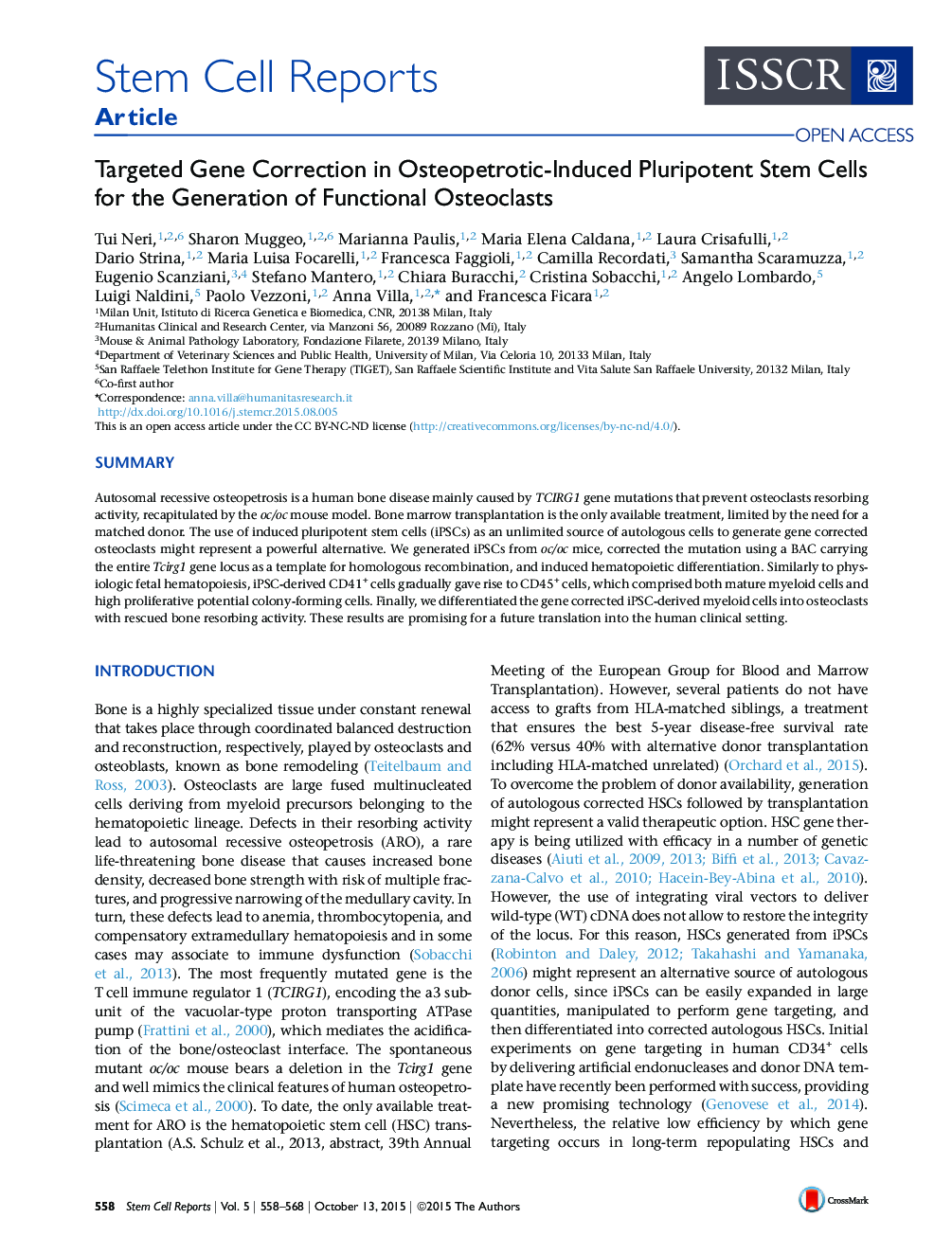| Article ID | Journal | Published Year | Pages | File Type |
|---|---|---|---|---|
| 2093423 | Stem Cell Reports | 2015 | 11 Pages |
•iPSCs from oc/oc mice bearing Tcirg1 gene mutation were generated for the first time•A BAC-based approach corrects the Tcirg1 gene mutation•iPSCs differentiate similarly to physiologic fetal hematopoiesis•The osteopetrotic phenotype in osteoclasts from BAC-corrected iPSCs was rescued
SummaryAutosomal recessive osteopetrosis is a human bone disease mainly caused by TCIRG1 gene mutations that prevent osteoclasts resorbing activity, recapitulated by the oc/oc mouse model. Bone marrow transplantation is the only available treatment, limited by the need for a matched donor. The use of induced pluripotent stem cells (iPSCs) as an unlimited source of autologous cells to generate gene corrected osteoclasts might represent a powerful alternative. We generated iPSCs from oc/oc mice, corrected the mutation using a BAC carrying the entire Tcirg1 gene locus as a template for homologous recombination, and induced hematopoietic differentiation. Similarly to physiologic fetal hematopoiesis, iPSC-derived CD41+ cells gradually gave rise to CD45+ cells, which comprised both mature myeloid cells and high proliferative potential colony-forming cells. Finally, we differentiated the gene corrected iPSC-derived myeloid cells into osteoclasts with rescued bone resorbing activity. These results are promising for a future translation into the human clinical setting.
Graphical AbstractFigure optionsDownload full-size imageDownload as PowerPoint slide
